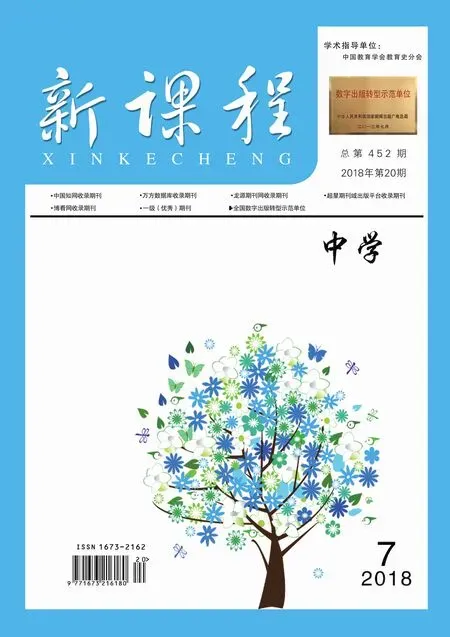對比教學法在初中英語教學中的運用
孟亞莉
(蘇州工業園區第十中學,江蘇 蘇州)
俄國心理學家烏申斯基說過:“比較是一切理解和一切思維的基礎。”在英語教學中,需要記憶大量詞句和語法知識點,教師在教學中可以適時地滲透對比教學法達到直觀教學和深刻記憶,通過初中英語教學的切身體會,英語對比教學法的優勢尤為明顯:
一、聯想對比法在詞匯記憶上的有效性
1.學會尋找形似單詞的結合點。
(1)牛津英語 8A 中,以 p-開頭的單詞 protect,prevent,provide形似難分且用法復雜。
聯想課文語境We protect giant pandas by providing bamboos for them and preventing people from hurting them...再想一保護protect兩提供provide sb.with sth.=provide sth.for sb...三阻止prevent...from doing.=stop...from doing=keep...from doing。前兩個from可以省略,第三個from不可省。聯想開花provide sb.with sth.=offer sb.sth/keep...doing sth.一直不停做某事。
(2)expect/except唯一不同是p和c顛倒,恰好也是關鍵,先入為主:
expect盼望 “盼”的中文讀Pan;except除了,“除”的中文讀Chu,抓中文發音想忘都難!
2.辨清詞性區分單詞自身引申詞。
(1)名詞/動詞advice/advise字母c和s決定詞性和用法。
聯想扭動的s即動詞再想名詞advice可數與否是關鍵:a piece of advice=a suggestion
聯想開花動詞“建議”suggest not doing sth.=advise sb.not to do sth.
(2)名詞/形容詞,同名異形,巧記safety/danger/safe/dangerous
同名:名詞safety/danger都是6個字母。異形:形容詞safe/dangerous字母數不同。
二、歸納性對比在短語用法上的重要性
英語短語搭配匯集諸多知識點,重視歸納助力學生分清其含義和掌握其用法。
She used to live in the town,but now she is used to the life in the city./She will be used to living here.
used to過去經常性的習慣或狀態動詞used否定式是didn’t use to.../used not do...
be used to“習慣于...”used在這是形容詞后跟名詞或動名詞;be used to do被用來做...
三、語法教學中對比教學法的直觀性
1.He is cooking now./He was sleeping at 9:00 last night.過去進行時只是變了be動詞,進階對比時間狀語,He was running at this time yesterday. 點時間 From 2006 to 2017,she was working here.段時間
2.It is+adj.of/for sb.to do sth.for表示客觀情況的形容詞of表示主觀感情和態度的形容詞。
It’s important for us to learn English well./It’s silly of you not to study hard.
四、借助對比教學法實現記憶的求同存異性
1.新授 dare,借 need 求同。
情態動詞need+do否定need not do行為動詞need+to do否定 don’t need to do
He didn’t dare to walk alone.他不敢一個人散步。They daren’t ask for help.他們不敢求助。同理:情態動詞dare+do否定dare not do 行為動詞dare to do否定don’t dare to do。
2.名詞前的修飾成分需存異。
自然保護區/自然災害nature reserves/natural disasters
自愿醫生/自愿工作volunteer doctors/voluntary work
現代教育心理學原理認為:為了學習任何一項言語信息而進行的教學,其最重要的特點是提供和這項信息聯系在一起的,或者可以配合起來的、更大的、有意義的知識。比較教學法正是遵循這一原理去實踐的。在教學實踐中,學生進入橫比成趣、縱比明理之中,自主學習能力和探究意識明顯提高。對比教學法定會給初中英語教學不斷添色增彩。

